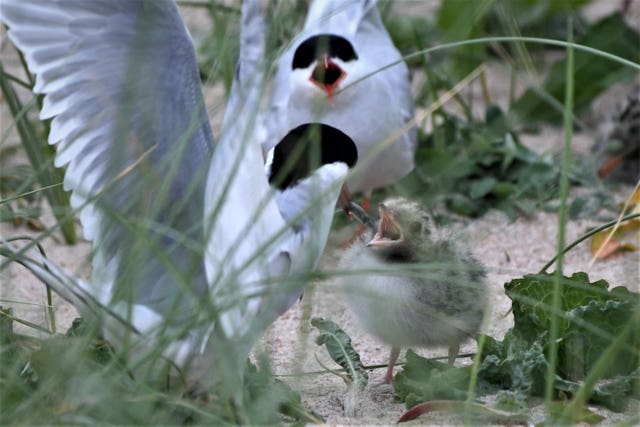Anxious wait to see how Arctic terns fare at colony struck by bird flu in 2023
The number of adult pairs returning to Long Nanny in Northumberland is not as low as feared this year, National Trust rangers say.

Rangers looking after Britain’s largest mainland colony of Arctic terns are “on tenterhooks” to see how the seabirds fare after a devastating outbreak of bird flu last year.
National Trust rangers are waiting to see if the colony at Long Nanny on the coast of Northumberland has managed to escape avian influenza this year.
The coastal site is typically a safe breeding ground for both Arctic terns, which migrate to Antarctica each year and back to breed in a round trip of tens of thousands of miles, and a much smaller colony of little terns, which are the second rarest seabird in the UK.

This year the number of adult breeding Arctic terns is lower, but the rangers say it is not as bad as they feared, with the number of nests with eggs down 20% at 1,040 compared to 1,300 in 2023.
Bird flu had a devastating impact on seabirds across the UK in 2023, with the last two years seeing the worst outbreak of the virus since it emerged in the 1990s, killing birds from puffins to skuas and terns at key breeding sites around the country.
James Porteus, area ranger at Long Nanny, said that by this time last year, the first few cases of bird flu had been confirmed and 1,329 Arctic terns – 1,066 chicks and 263 adults – died from the virus.
“The good news is that the number of returning adults is higher than we hoped, with well over 2,000 breeding adults recorded.
“Most birds have successfully laid eggs which have now hatched.
The little tern colony at Long Nanny is much smaller, with the number of returning pairs down a third to a minimum of 24, compared to 37 pairs in 2023.
Mr Porteus said any drop in little tern numbers was “very worrying”, with the number of breeding pairs gradually declining over recent decades from around 2,000 across England in the 1980s to 1,400 today.
“Habitat loss and recreational disturbance along our coast is impacting our little tern population and reserves such as the Long Nanny are so important to the future of this species in the UK,” he said.
The team at Long Nanny also confirmed the first known breeding attempt between an American black tern and Arctic tern, but said that although three eggs were successfully laid, it now seems they are unlikely to hatch given the period of time which has now passed.
Professor Chris Redfern from Newcastle University, who has been monitoring the pair said: “Black terns lay smaller eggs than Arctic terns, and we now know that the Long Nanny American black tern is female.

He said terns were loyal to their partners, so it would be interesting to see if they tried again next year.
The National Trust is asking visitors to the Long Nanny area to avoid disturbing seabirds by keeping a safe distance from the colony and keeping dogs on a short lead at all times in the next few critical weeks of the breeding season.





